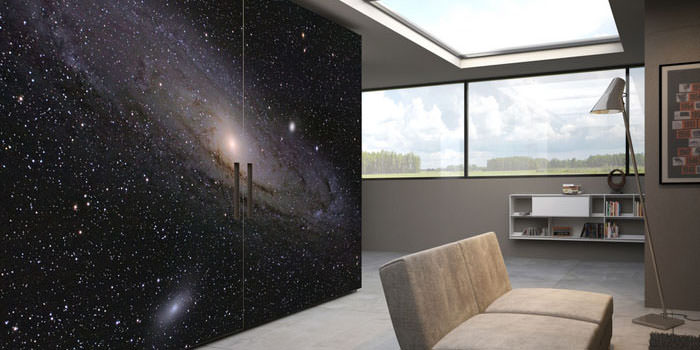
The Significance of Space in Interior Design
Space in interior architecture: An exploration of form and function
Interior architecture is the art of creating harmonious, functional spaces for people. At the heart of this discipline lies the fundamental notion of space. Space in interior architecture goes far beyond the simple physical definition of a volume. It embodies the essence of design and plays a crucial role in creating environments that reflect the vision of the designers and meet the needs of the occupants.
Space is a fundamental element in interior design, playing a pivotal role in creating functional, aesthetically pleasing, and harmonious environments. It encompasses both the physical dimensions and conceptual aspects that shape the overall design. Understanding the importance of space is essential for interior designers as they strive to craft exceptional and purposeful interiors
The power of form:
In interior architecture, the form of space is a powerful element that influences the perception and experience of occupants. Shapes can be expressive, evoking specific emotions and creating unique atmospheres. A room with soft, curved lines can inspire a sense of calm and fluidity, while a room with sharp angles and sleek surfaces can communicate an impression of modernity and precision. Designers skilfully use shapes to shape interior spaces according to aesthetic intentions and functional objectives.
Space can also be manipulated by subdividing its volumes. Partitions, furniture and architectural elements serve as separations and connections, creating a sequence of spaces that make up the interior. These subdivisions define distinct zones for specific activities, promoting functional organization. For example, a kitchen that opens onto the living room offers a feeling of conviviality and sharing, while a separate bedroom creates an intimacy and tranquility conducive to rest.
The functionality of space:
Space in interior architecture cannot be fully understood without considering its functionality. A well-designed space must meet the needs of its occupants, whether for individual or collective activities. Functionality stems from a thorough understanding of circulation flows, lighting use, acoustics and structural constraints.
Space planning must take ergonomics into account, creating spaces that adapt to the body’s natural movements and facilitate interactions between people and objects. Designers must also take into account the specific needs of users, such as accessibility for people with reduced mobility, or adaptability to meet changing lifestyles.
Space can also influence the well-being and comfort of occupants. Proportions, scale and ceiling height all contribute to the feeling of space. A well-lit space, with views to the outside and adequate ventilation, creates a pleasant atmosphere and promotes the health and well-being of occupants.
The conceptual dimension of space:
In addition to its physical dimension, space in interior architecture has a conceptual dimension that goes beyond purely material aspects. This dimension refers to the way in which space is perceived, interpreted and experienced by its occupants. It is influenced by elements such as light, color, texture, materials and decorative elements.
The conceptual dimension of space enables designers to create moods, atmospheres and identities specific to each interior. For example, the use of bright colors and reflective materials can create a feeling of space and luminosity, while darker colors and rougher textures can generate a more intimate and warm atmosphere.
Conceptual space can also be used to express ideas, themes or stories. Designers can use architectural elements, works of art or pieces of furniture to create spaces that reflect a specific cultural identity, lifestyle or vision.
Creating Aesthetic Balance:
Beyond its utilitarian aspects, space significantly contributes to the overall aesthetic appeal of an interior design. The way space is arranged, divided, and connected with various architectural elements can evoke specific emotions and set the desired ambiance. Designers leverage the principles of proportion, scale, and balance to achieve visual harmony within a space. Strategic use of positive and negative space, as well as the manipulation of light and color, can create a sense of openness, intimacy, or dynamism, depending on the desired design intent. An aesthetically pleasing space not only enhances the visual appeal but also instills a sense of comfort and enjoyment for its inhabitants.
Fostering User Experience:
Space has a profound impact on the experience and well-being of individuals within an interior environment. The arrangement of furniture, circulation paths, and access to natural light can greatly influence how people interact with a space. Thoughtful consideration of spatial flow ensures ease of movement, minimizes congestion, and promotes intuitive navigation. In addition, the scale and proportion of a space can evoke feelings of comfort, spaciousness, or coziness, creating an atmosphere that resonates with the intended users. The careful curation of space contributes to a positive user experience, fostering a sense of satisfaction and emotional connection to the designed environment.
Adapting to Evolving Needs:
The importance of space in interior design extends beyond its immediate impact, as it also allows for adaptability and flexibility. A well-designed space considers the potential for future changes in functionality, technology, or user requirements. Versatile layouts and modular designs enable easy reconfiguration, accommodating evolving needs without significant structural modifications. This adaptability ensures that the space remains relevant and functional over time, providing a long-lasting and sustainable solution.
Conclusion:
Space in interior architecture goes far beyond the simple definition of volume. It is an essential element of design, capable of arousing emotions, fostering social interaction and meeting the functional needs of occupants. Interior designers skilfully use form, subdivision and functionality to create spaces that tell a story, adapt to contemporary lifestyles and enhance users’ quality of life. By understanding the importance of space in interior architecture, we can better appreciate and interact with the environments that surround us.

0 comments